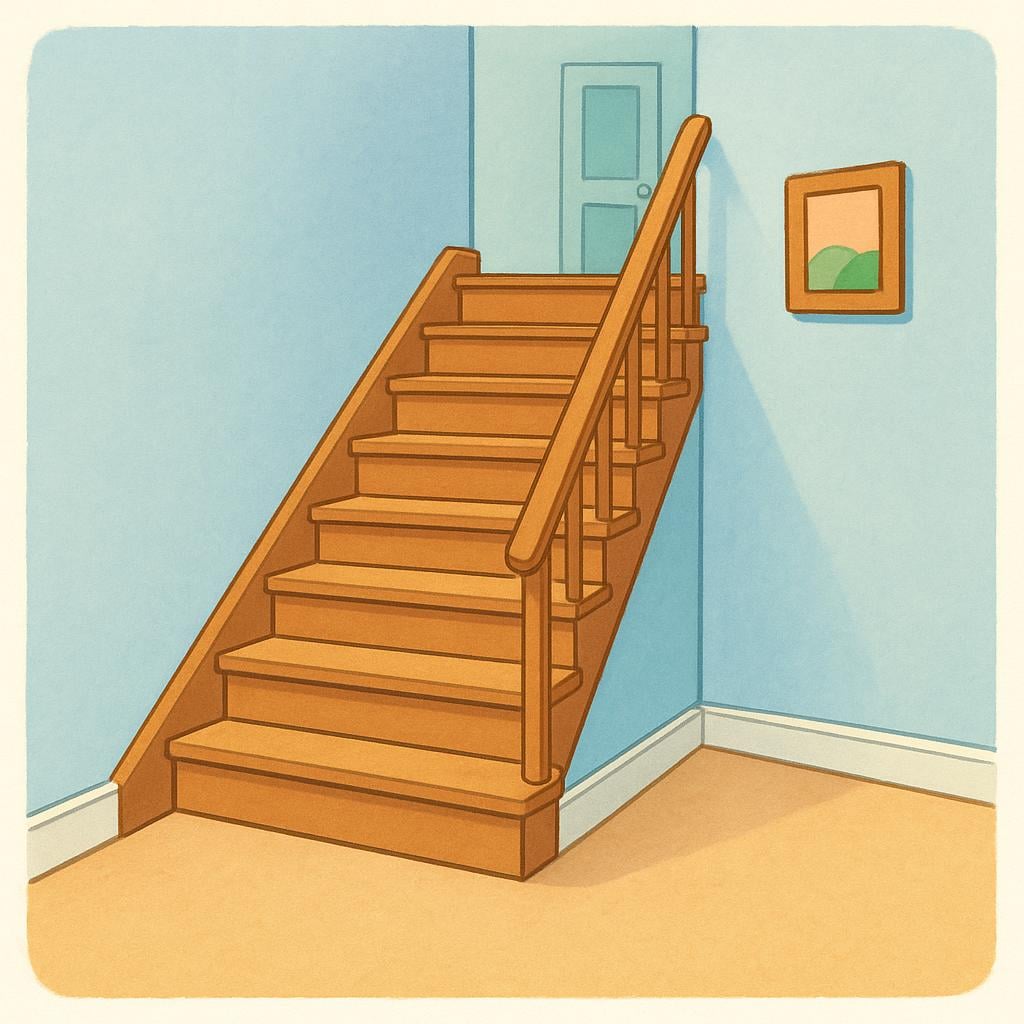
escaleras
es-cah-LEH-ras
📝 In Action
Subimos las escaleras hasta el tercer piso.
A1We went up the stairs to the third floor.
¿Dónde están las escaleras de emergencia?
A2Where are the emergency stairs?
Ten cuidado, las escaleras están resbaladizas.
B1Be careful, the stairs are slippery.
💡 Grammar Points
Always Plural
Even when referring to a single set of stairs or a staircase, Spanish usually uses the plural form, 'las escaleras.' Treat it like 'scissors' or 'trousers' in English—it’s a collective plural.
Feminine Gender
Since this word is feminine and plural, it always uses the article 'las' (las escaleras) and any describing words (adjectives) must also be feminine and plural (escaleras viejas, 'old stairs').
❌ Common Pitfalls
Using the Singular Form
Mistake: "La escalera está limpia. (Trying to refer to a single staircase)"
Correction: Las escaleras están limpias. (Use the plural, even if there is only one set.)
⭐ Usage Tips
Quick Reference
If you see 'escalera' in the singular, it often means 'ladder' (the portable climbing tool), not the built-in steps of a house.
✏️ Quick Practice
💡 Quick Quiz: escaleras
Question 1 of 1
Which sentence correctly uses 'escaleras'?
📚 More Resources
Frequently Asked Questions
What is the difference between 'escalera' (singular) and 'escaleras' (plural)?
While 'escaleras' is the common way to say 'stairs' or 'staircase' in a building, 'escalera' in the singular usually means 'ladder' (the portable kind you use for repairs).
How do I refer to an escalator?
You use the phrase 'escaleras mecánicas' (mechanical stairs). This is a great example of 'escaleras' being used as a base word.